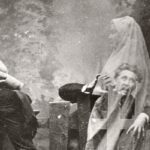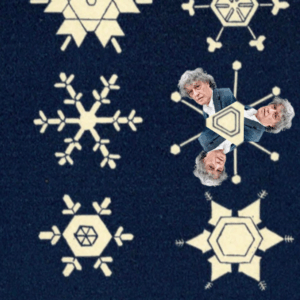
Secrets of the Book Designer: Paperbacks
On Creating the Paperback Edition of Dept. of Speculation
THE DAY JOB
I’m a cover designer at Vintage & Anchor Books, the paperback imprint at the Knopf Doubleday Publishing Group. On average, roughly half our covers are adapted from the hardcover design, and the rest are entire redesigns. Whether or not a book needs a facelift depends on a number of factors, including (most importantly) hardcover sales, the hardcover design’s commercial accessibility, and its reproducibility in paperback. The goal of the paperback is therefore to reposition a book, capture a wider audience, or target a new market. We give books a second chance.
What this means visually is democratizing the design: making it appeal to more readers by showing more of a sense of place, time, character, genre, or mood. Generally, hardcovers can afford to be a bit abstract while paperbacks prefer to be more concrete. Although this can sometimes result in graphic sameness, readers do need cues to help them decide what to buy. The goal is, after all, to sell books. The internal struggle as a designer, then, is finding a satisfying balance between commercial accessibility and artistic standards. We try to push boundaries to create covers that are graphically interesting—which has a pragmatic purpose because it helps them stand out—while maintaining a level of marketability.
Before I begin work, I read as much as I can of and about the book and author—reviews, marketing strategies, and similar titles, jotting down anything I find metaphorically significant or visually interesting. If necessary, I collect art research for inspiration, especially for era-specific books. It helps to have a mood board containing the visual language I am trying to capture. I then ask myself:
What is the overall tone or mood of the writing?
Does it call for a photograph, an illustration, or a collage?
Is the author important enough to warrant an all-type cover?
I design as many iterations of a cover as necessary until I am happy with at least a few directions. My art director might make suggestions or help me narrow it down even further to present to the committee, who then select one to be sent to the author for approval. All this communication is handled through the editor. Unless you have a relationship with the author, designers rarely interact with them in the design process.
ON DESIGNING DEPT. OF SPECULATION
The paperback of Dept. of Speculation by Jenny Offill was one of the more challenging covers I’ve had to work on because the content is so difficult to convey—what makes the book unique is its prose and form. The narrative can be best described as the thoughts of a writer as we witness her enter a marital crisis (her husband’s infidelity), told in short, disparate paragraphs. The book is inventive, witty, and sobering.
We originally wanted to market it as a “marriage novel” to appeal to female book clubs, so I used a corner image of newlyweds while still trying to allude to the book’s unique formal structure:

I wasn’t terribly happy with this direction—there was something tonally off about the simplistic depiction of the couple as a visual referent to the marriage theme in the book. It felt forced, a little cheesy, and the more traditional layout just wasn’t capturing the unique narrative. We sent it to the author, and she felt the same.
Thankfully, she asserted her excellent taste. The problem with this direction, Offill pointed out, is that male booksellers and readers would not pick up the book if it had a traditional “marriage novel” cover. Readers had responded to the writing’s unique structure, so she wanted a cover that evoked that. She stressed the need for something gender-neutral, dreamy, or graphic, and sent us examples of paperbacks she likes, such as Hopscotch, The Disappointment Artist, and Veronica. She disliked the wedding script and wanted a “strong font.” I agreed, and was excited to design the next batch.
I probably sketched about 30 covers, some of them half-baked:
After playing around with various type-driven directions, I recalled one memorable page under chapter 22 that comprised a continuous stream of the phrase “soscared.” It was raw, powerful, and graphically interesting. I loved it. The type on the final cover was directly inspired by this page. In keeping with the celestial theme, I placed it in circles and created a faux die-cut to suggest a sense of mystery. The author approved it immediately.

Linda Huang
Linda Huang is a graphic designer based in New York. She is currently the art director at Pantheon Books.



















